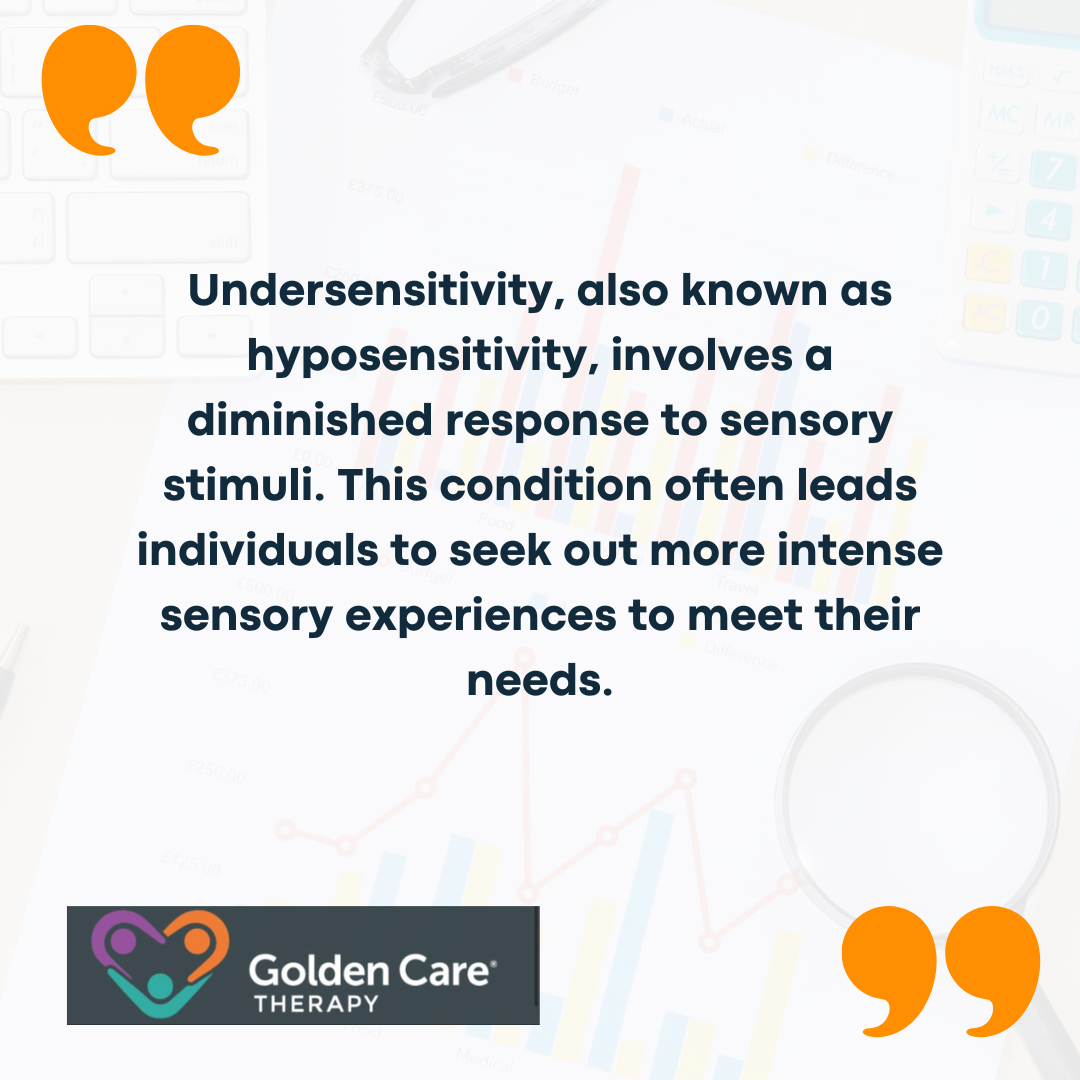Sensory processing problems are widely recognized as a common symptom of autism spectrum disorder (ASD). A majority of children and adults on the autism spectrum exhibit significant sensory issues, making it crucial to address these challenges.
Sensory-related issues are also prevalent in individuals with ADHD, OCD, and other developmental delays. Nonetheless, understanding the specific signs of sensory problems in autistic individuals is vital for appropriate support and interventions.
Sensory Processing Explained
Sensory processing refers to how the brain receives and interprets information from the environment through the senses. While most people are able to process sensory input without difficulty, individuals with sensory processing difficulties may struggle to effectively process and respond to sensory information.
Sensory processing problems are now considered a symptom of autism because a majority of children and adults on the autism spectrum also have significant sensory issues. However, it is important to note that sensory issues can also be found in individuals with other conditions.
Types of Sensory Sensitivities
Sensory sensitivities in autistic individuals can manifest across various sensory modalities, including sight, touch, taste, smell, sound, proprioception (sense of position), balance, movement, temperature, and pain. These sensitivities can be broadly categorized into two types: oversensitivity and undersensitivity.

Signs of Oversensitivity
Oversensitivity, or hypersensitivity, in autistic individuals involves an excessive response to sensory stimuli. Recognizing these signs is crucial for providing appropriate support. Common signs of oversensitivity include:
- Visual Sensitivities: Discomfort in bright lights or visually busy environments. Autistic individuals may find these settings overwhelming and seek to avoid them.
- Tactile Sensitivities: Avoidance of certain textures or fabrics, which can cause significant discomfort or distress. This may result in selective clothing choices or refusal to touch certain materials.
- Gustatory Sensitivities: Limited food preferences based on texture, taste, or smell. Individuals might have a restricted diet due to adverse reactions to specific food textures or flavors.
- Auditory Sensitivities: Strong reactions to loud or unexpected sounds, such as covering their ears or becoming distressed in noisy environments. This sensitivity can make everyday settings challenging.
- Olfactory Sensitivities: Heightened sensitivity to certain smells, which can be overwhelming and cause avoidance of specific areas or activities.
Signs of Undersensitivity
Undersensitivity, also known as hyposensitivity, involves a diminished response to sensory stimuli. This condition often leads individuals to seek out more intense sensory experiences to meet their needs. Autism undersensitivity can manifest in several ways:
- Sensory Seeking: Autistic individuals with undersensitivity may actively seek intense sensory experiences. This can include behaviors like spinning, jumping, or other vigorous physical activities that provide the needed sensory input.
- Visual Preferences: A preference for bright colors or visually stimulating patterns is common. These individuals may be drawn to vibrant, high-contrast visuals to compensate for their reduced sensory perception.
- Tactile Preferences: Enjoyment of tight hugs or wearing tight-fitting clothing is another sign. The deep pressure provided by these sensations can be comforting and help regulate their sensory input.
- Auditory Preferences: Playing music or other sounds at a high volume is typical for those with auditory undersensitivity. The increased volume helps them perceive sounds more clearly and meet their auditory sensory needs.
- Repetitive Behaviors: Engaging in self-stimulatory behaviors, such as hand-flapping or rocking, is a way to seek additional sensory input. These repetitive actions help provide the sensory feedback that they might otherwise lack.
Recognizing the Signs
Recognizing the signs of sensory problems in autistic individuals is crucial for understanding their needs and providing appropriate support. Sensory processing difficulties are unique to each individual and can vary in intensity and specific sensory areas affected. Here are some additional indicators of sensory sensitivities:
- Motor Coordination and Balance Issues: Challenges with coordination and balance, appearing clumsy or having poor body awareness.
- Difficulties with Transitions: Struggling with transitions between activities or environments, resisting changes in routine.
- Limited Food Preferences: Selective eating patterns due to sensitivities to taste, texture, or smell.
Managing Sensory Sensitivities
Addressing sensory sensitivities involves a multidisciplinary approach, engaging various professionals, and implementing tailored strategies to support the individual’s sensory needs.
Multidisciplinary Approach
A multidisciplinary team may include occupational therapists, speech pathologists, pediatricians, psychologists, and other specialists. Each professional brings unique expertise to assess and manage sensory sensitivities, creating personalized plans to address specific areas of concern.
Strategies for Support
Parents and caregivers play a critical role in managing sensory sensitivities. Here are some strategies to create a supportive environment:
- Create a Sensory-Friendly Environment: Design spaces that minimize sensory overload, such as reducing visual clutter, using calming colors, and providing comfortable seating.
- Establish Routines: Consistent routines provide predictability and structure, reducing anxiety related to sensory sensitivities.
- Provide Sensory Breaks: Incorporate regular breaks to engage in activities that help regulate the sensory system, such as tactile sensory activities or deep pressure techniques.
- Use Visual Supports: Visual aids, such as schedules and social stories, can help individuals understand and navigate their daily routines.
- Offer Choices: Allowing choices within structured activities empowers individuals and helps reduce sensory sensitivities by aligning with their preferences.
Therapeutic Interventions
Therapeutic interventions play a crucial role in treating sensory processing difficulties. These interventions typically involve collaboration with trained professionals, such as occupational therapists, who specialize in sensory integration. The goal is to help individuals with autism develop adaptive responses to sensory stimuli through structured and controlled experiences.
Sensory Integration Therapy
Sensory integration therapy is a specialized form of occupational therapy that focuses on helping individuals with autism process and respond to sensory input more effectively. This therapy uses a variety of activities to provide sensory experiences in a structured manner. Some common activities include:
- Swinging: Helps with vestibular input, aiding balance and spatial orientation.
- Brushing Techniques: Calms the nervous system and improves tactile tolerance.
- Weighted Vests: Provide deep pressure input, which can have a calming effect.
- Tactile Sensory Activities: Engage the sense of touch through various textures and materials.Occupational Therapy
Occupational therapy aims to help individuals develop the skills needed for everyday activities. For those with sensory processing issues, this can involve:
- Daily Living Skills: Teaching strategies for dressing, eating, and hygiene.
- Social Interactions: Helping individuals engage with others in a sensory-friendly manner.
- Sensory Overload Management: Developing personalized strategies to cope with overwhelming sensory input.
Behavioral Therapy
Behavioral therapy, such as Applied Behavior Analysis (ABA), can also be beneficial for individuals with sensory processing challenges. This approach focuses on identifying triggers for sensory-related behaviors and implementing strategies to modify them. For example, ABA might be used to:
- Identify Sensory Triggers: Determine which sensory inputs cause distress or behavioral issues.
- Implement Coping Strategies: Teach alternative behaviors to manage sensory discomfort.
- Reinforce Positive Behaviors: Use positive reinforcement to encourage adaptive responses to sensory stimuli.
Personalized Support Plans
Creating personalized support plans is another vital aspect of treating sensory processing difficulties. These plans are tailored to the specific needs of the individual and provide a structured framework for managing sensory sensitivities.
Environmental Modifications
Adjusting the environment can significantly reduce sensory overload and create a more comfortable space for individuals with autism. This might involve:
- Reducing Noise and Clutter: Using noise-canceling devices or creating quiet spaces. You can also use calming colors to reduce visual clutter.
- Comfortable Seating: Providing ergonomic furniture to enhance comfort and reduce sensory stress.
Sensory Diet
A sensory diet is a set of activities and strategies designed to meet an individual’s sensory needs throughout the day. It can include:
- Sensory Breaks: Regular breaks to engage in sensory activities that help regulate the sensory system.
- Specific Sensory Activities: Activities tailored to the individual’s preferences and needs, such as deep-pressure activities or movement-based tasks.
- Tools and Equipment: Items like fidget toys, chewable jewelry, or weighted blankets that support sensory regulation.
Communication Strategies
Effective communication strategies are essential for individuals with sensory processing difficulties. These strategies might include:
- Visual Guidance: Using pictures, symbols, or written instructions to enhance understanding.
- Social Stories: Narratives that explain social situations and appropriate responses to help individuals navigate sensory challenges.
- Alternative Communication Tools: Devices or apps that facilitate communication for those who struggle with verbal expression.

The Takeaway
Understanding and addressing sensory challenges is essential for individuals with autism to thrive in their daily lives. By recognizing their unique sensory sensitivities and providing appropriate support, parents and caregivers can help individuals with autism navigate the sensory world with greater ease.
Professional guidance from occupational therapists and other specialists can also offer valuable insights and recommendations for accommodations, ensuring that individuals with autism reach their full potential. It’s important to ensure a holistic approach and provide ongoing support as well.
If you’re seeking specialized ABA therapy in New Jersey, Indiana, Georgia, and New York, Golden Care offers comprehensive services tailored to meet the unique needs of each individual. Contact us to learn more or book a consultation today.
Sources:
- https://www.brainbalancecenters.com/blog/signs-and-symptoms-of-sensory-processing-disorder
- https://childmind.org/article/sensory-processing-issues-explained/
- https://crawlwalkjumprun.com/sensory-processing-disorder-children/
- https://raisingchildren.net.au/autism/behaviour/understanding-behaviour/sensory-sensitivities-asd



